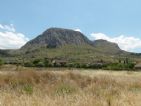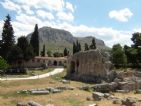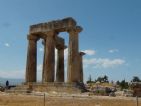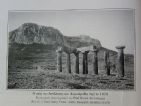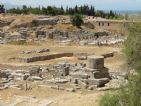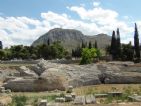
Korinth (Korinthos, Corinth)
Comparisson reports are under license of:

Lo que dice el Arxiduc:
 “Archaia Korinthos (Old Corinth) was once a city of luxury and fashion, rivaling with Athens to become the capital of Greece after the country’s declaration of independence. Today it is just a poor town on a soft hill which descends on three stepped slopes from its Acrocorinth (“Upper Corinth”) to the sea. It now has approximately 200 well-separated houses, thus appearing to be much bigger from the sea. It has approximately 600 inhabitants. […]
“Archaia Korinthos (Old Corinth) was once a city of luxury and fashion, rivaling with Athens to become the capital of Greece after the country’s declaration of independence. Today it is just a poor town on a soft hill which descends on three stepped slopes from its Acrocorinth (“Upper Corinth”) to the sea. It now has approximately 200 well-separated houses, thus appearing to be much bigger from the sea. It has approximately 600 inhabitants. […]
[Cypress, almond, mulberry and fig trees, very green areas due to the abundance of water and 7 springs.]
“Everything looks very Turkish. One day when I was there, on a warm sunny morning, I saw an old man wearing a fez like a turban, sitting next to a fountain, smoking his tschibuk; other men danced a sirtó to the music of drums and pipes, holding each others’ hands under some plane trees. Many of them had baskets with cheese on top of their heads. I thought I was in Turkey. In front of the bodegas, people sat comfortably on backless straw stools, half inebriated by the mastica liquor. A male goat inside one of the taverns called my attention, tranquilly observing the drunks – a reminder of the bucks wearing crowns of vines in Bacchus’ parties of old.”

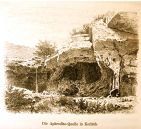
Datos proyecto Nixe III:
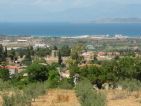 We take a photo of old Corinth from the hill where Acrocorinth is found and another image of Acrocorinth from the old city.
We take a photo of old Corinth from the hill where Acrocorinth is found and another image of Acrocorinth from the old city.
In the old city, we visit the archeological remains from the Roman era. There we can see the fountain of Aphrodite and the Temple of Apollo. In terms of the fountain, we were told that it’s no longer in the same spot it was in the past. Just like the Archduke, we took an image of the Temple of Apollo in which we only see six columns, despite the fact that seven are still standing; one of them is blocking the last one.
When the Archduke visited the old city, it was practically the only thing to be seen reminding people of the old Roman city. We can see a picture taken at the start of the 20th century in which there is a large field next to the columns and another one beyond the excavation sites, just as we can still see it today.
To finish, we can see an image of the odeon and a map of what the old Roman Corinth was like. We can now better associate the letters from Saint Paul we heard so much about in our youth to the city in front of us.
There is a street around the archaeological site adapted to mass tourism, featuring the typical souvenir shops and restaurants.








